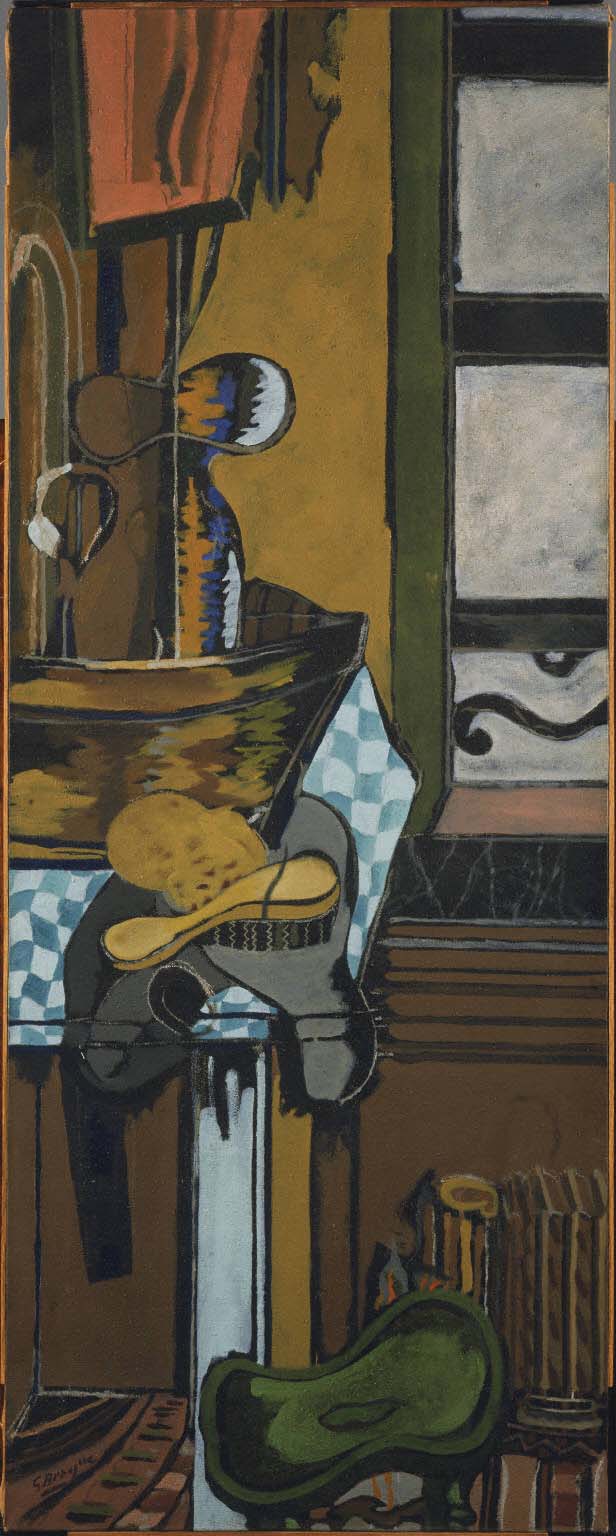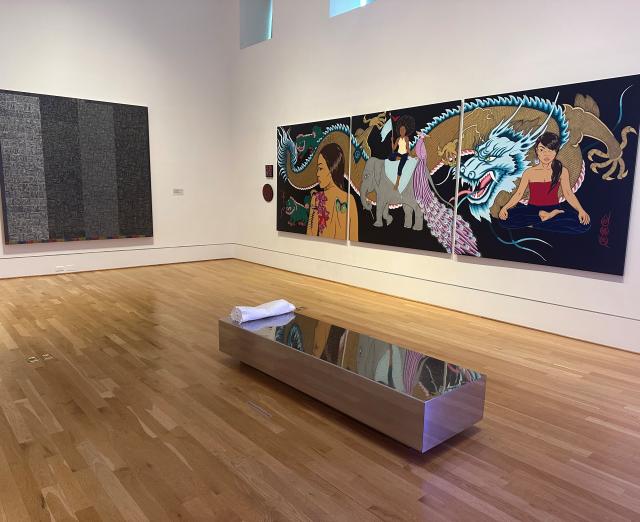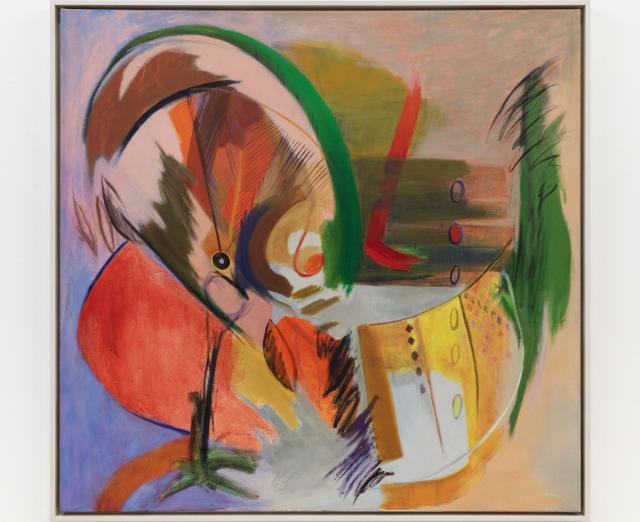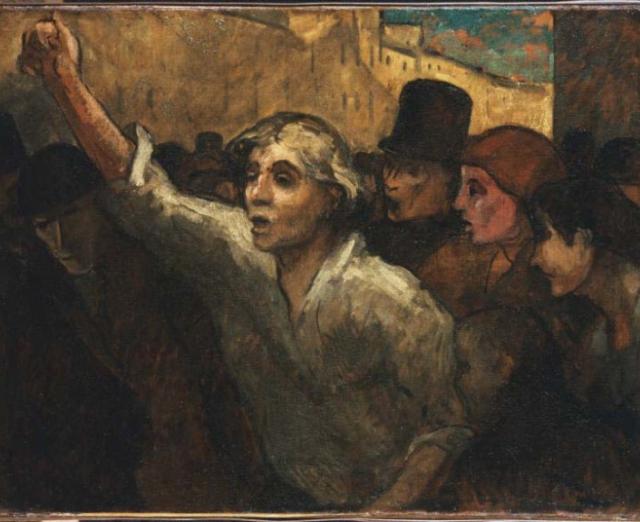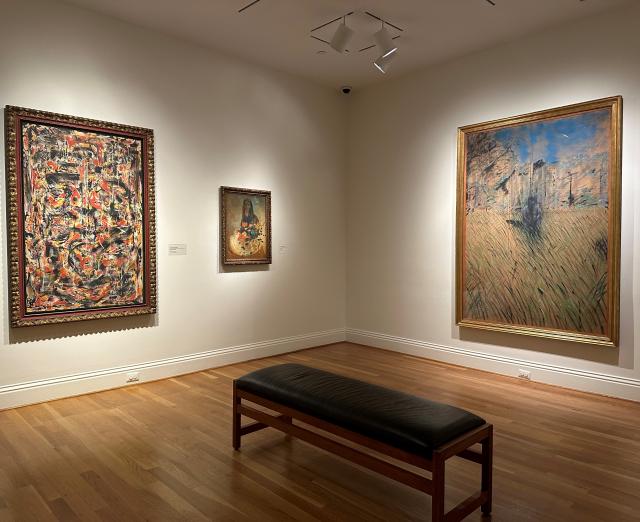The Phillips Collects: Danielle Orchard
Collection
Sight Rhyme I is the first work by Danielle Orchard to enter the collection.
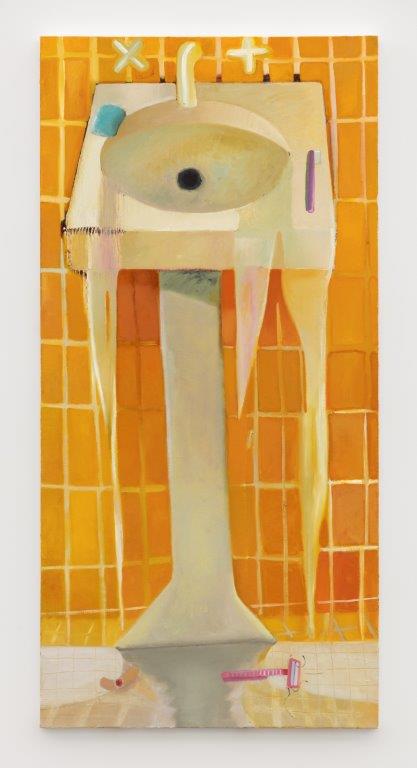
“I love it because it feels powerfully human and humanistic without a human presence, or, rather, the presence is made felt through their absence. It’s a little bit biological with the used razor, soiled band aid, water overflowing from the sink basin. What happened to the person? Where are they? And why is that sink staring back at me with a concentrated pupil? That is the source of the emptiness—the black hole at the center of the sink. The hardest color to paint with is orange–this ambitious artist has found painterly and chromatic beauty in the messy and even grotesque aspects of the mundane.”—Vradenburg Director & CEO Jonathan P. Binstock
Danielle Orchard (b. 1985, Michigan City, Indiana) is a painter whose work draws deeply from the canon of modern art, particularly the legacies of Picasso and Matisse. Her style is influenced by Analytic Cubism, with fragmented forms and perspectives, while also reflecting Matisse’s use of color. The core of Orchard’s practice is dedicated to the representation of the female body, often focusing on nudes, as well as themes of motherhood, pregnancy, and melancholia. Her work is contemplative and psychological, exploring the emotional and interior worlds of women.
In Sight Rhyme I, Danielle Orchard depicts a mundane bathroom sink with everyday objects—a toothbrush, soap, and a used razor. Although the human figure is absent, these personal items evoke a tangible, though indirect, female presence. The work also incorporates visual play. The tilted angle of the sink mirrors shapes from Picasso’s Guernica (1937), particularly the lamp that resembles a wide-open eye. In Orchard’s work, the sink becomes metaphorical weeping eyes, imbuing the everyday scene with emotional depth. Sight Rhyme I resonates with George Braque’s The Washstand (1944) from the Phillips’s collection, with its Cubist approach to interior space. Orchard enriches the exploration of domestic space with psychological layers.
